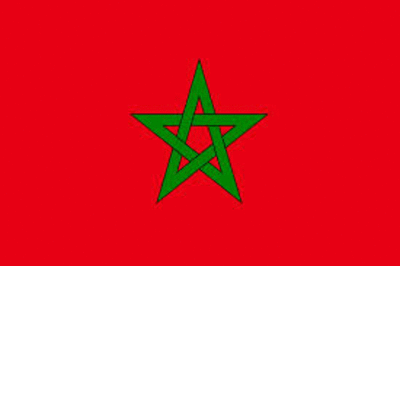1 . demography
In 2008 , the Moroccan population was estimated at 34.3 million people, or an average density of 77 inhabitants per km ² ; but Moroccans are unevenly spread across the country : the coastal areas and the northern plains recorded the highest densities.
The population has a high rate of growth : in 2008, the birth rate was estimated at 21.30 p. 1000 , the mortality rate of 5.50 per cent. 1000 , the fertility rate to 2.57 children per woman ; life expectancy is 71.5 years. According to these forecasts , Morocco should have 42 million inhabitants in 2025. The structure of the pyramid helps to fuel social unrest in a country where unemployment is high : for the period 1995-2000 , the share of under 15 in the total population is estimated at 36 percent . 100 , that of individuals aged 65 and over, 5.1 percent . 100 .
Morocco is a land of emigration : about 1.8 million Moroccans living abroad , particularly in France ( 575,000 ), Italy ( 200,000 ) and Belgium (120 , 000) .
key data demography
Population 34,272,968 inhabitants (2008)
Population density of 76.8 inhabitants per km2 (2008)
Fertility rate 2.6 children (s) per woman (2008)
Mortality rate 5.5 ‰ (2008)
Infant mortality rate 37.5 ‰ (2008)
Growth rate of 1.50% of the population (2008)
Life expectancy men : 69.1 years (2008)
female : 74 years (2008)
Population by age less than 25 years: 50.7 % (2008 )
25-64 years: 44.1% (2008)
over 65 years: 5.1% ( 2008)
Urbanization rate 58.8 % (2005)
Male literacy rate : 65.6 % (2005)
women : 41.5 % (2005)
HDI 0.640 (2006)
The population of Berber origin , was Islamized by the Arab conquerors from the eighth century. With
the growth of cities , some of the natives have abandoned their
traditional way of life and adopted the language and customs of
newcomers. Today,
the Berbers , or Imazighen (" free" ) rather live in rural areas, and
since the late 1980s, claiming their cultural specificity ; Arab populations are more urban . However,
the gap between the communities is not nearly as obvious as many
marriages between Arabs, Berbers and black Africans for a millennium ,
largely mestizo population and speaking Berber is not opposed
fundamentally to the fact also belong to the Arab civilization.
The
number of Sahrawis , Berbers mostly belonging to the confederation of
many Regueibat is disputed by the various parties to the conflict in
Western Sahara . It varies from 170 000 to 1 million , the latter figure being advanced
by the Polisario Front , which takes into account the Sahrawi refugees
outside the Moroccan territory.
Approximately
100,000 Europeans (25 p. 100 French ) live in Morocco, and a descendant
of the Jewish minority large community who emigrated to France or
Israel in the 1960s and 1970s.
2 . Administrative divisions and major cities
The country is divided into 16 economic regions subdivided into provinces and urban prefectures.Moroccan provinces are administered by prefects appointed by the king and submitted to central government. Each province is divided into "circles" , which are themselves divided into " districts ".The population distribution between rural and urban areas is relatively balanced : in 2005, 59 p. 100 Moroccans were urban dwellers. Rabat , the capital and one of the largest cities in Morocco , is located on the Atlantic coast ( 717,000 inhabitants , 1992 estimate ) . Casablanca (2.1 million) is the largest city in the country and the first port; Marrakech (618 000 inhabitants ) and Fez (573 000 inhabitants ) are the major areas of Moroccan trade . Tangier ( 592,000 inhabitants) controls the Strait of Gibraltar. The Government encourages the Moroccan population to settle in Western Sahara , whose main town is El- Aïun ( Laayoune ) .
do you like this؟ share! ↓















